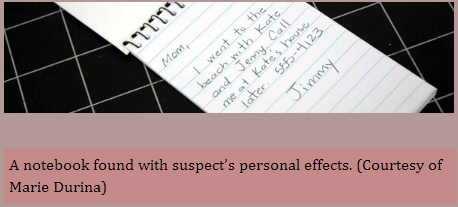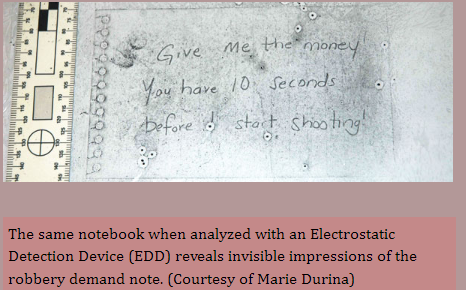Forensic Document Examination Examples
As no two individuals write alike, the evidence of handwriting is important in several types of cases involving disputed “IOU” loan agreements, cheques, suicide notes, deeds, wills, official documents, security documents, and anonymous letters. Most of the documents are ordinary documents until there is a dispute or question regarding the origin and authenticity of the document. Then the document is called into question. In this condition, the document that’s in query will have to be scrutinized by a suitably trained forensic document inspector to define the facts about it. A forensic handwriting examination is a side-by-side comparison of known and questioned writing samples to determine whether the questioned writing was written by the writer of that known material. Let’s look into some Forensic Document Examination examples to get a clear picture.
Applications of Forensic Document Examination
Since most documents are part of our daily lives, forensic document examiners work in a broad array of cases. They are called to investigate the authenticity of the documents in situations like
- Title/deed lawsuits
- Medical malpractices
- Contested contracts
- Contested wills
- Stalking
- Extortion
- Kidnappings
- Bank robberies
- Homicides
- Suicides
- Fraud
- Identity theft
- Counterfeiting
- Forgeries
Most frequently, forensic document examiners are asked to resolve the questions of authorship. Whether the signature is genuine on the mortgage loan? The anonymous note was written by whom? Whether the deceased signed the will? When the forensic document examiner compares the documents found at a crime scene to the known writing samples of a suspect, he/she can help confirm who wrote the note and exclude or include suspects from the examination.
To understand it better, Let’s look at other forensic document examination examples.
1. Ransom Note Nabs Kidnapper
One kidnapping case in 1956 from New York’s Long Island helps in illustrating the key role a forensic document examination plays in an examination. Here, in this case, a one-month-old child was taken away from his home, and in the baby’s carriage, a ransom note was found, left supposedly by the babysitter of the child. The investigators could determine distinguishing features in how the writer molded sixteen letters of the alphabet, most principally the lowercase “m”. This resembled the sideways “z”.
The investigators thoroughly searched around 2 million documents for similar handwriting until one probation officer discovered in his files documents written by one old auto mechanic of 31 years who had a similar typical “m”. The document examiners were able to match the ransom note conclusively to the handwriting of the suspect, aiding in securing a conviction.
2. Case of Fraudulent Cheques
Forensic document examiners face a common problem that involves alterations, particularly to legal documents. For example, if anyone altered a cheque to increase its amount, the examiners can determine this when they compare the manner the inks from various pens react when they are exposed to infrared radiation.
The example below shows how a cheque made out to “Cash” for an amount of $1,000 has been changed by altering the “1” to “9” and adding the name of the recipient. Even though in visible light, the black inks look the same, but when subjected to certain frequencies of infrared light, it is evident that the ink used for formulating the genuine cheque reacts quite differently than the ink that was used for altering the cheque, thus making the alteration obvious.


Also, the documents in the possession of a suspect can reveal clues from the hidden impression evidence that is known as indented writing. This can link a suspect to a particular crime. For example, whether the suspect of a bank robbery pens the hold-up note on the top of one more piece of paper that encompasses an impression of that text now.


Also, the examiners can identify the inks, materials, and even the kind of writing implements or office equipment used for producing the document. This is especially useful in fraud cases as these details are able to identify the time frame where the document was created. For example, if analysis of the paper of a document reveals a substance that was not used in the manufacturing of the paper during the time frame that was in question, the historical record, piece of art, or document would be confirmed to be fraudulent.
Questioned Document Examination Cases
The Questioned Documents are among the oldest disciplines of forensic science, starting around a hundred years ago. Many eminent historical document cases brought consideration to the field of Questioned Documents, which contain the Weinberger and Lindbergh kidnapping cases, and, more lately, the case of Enron. Typically, the Questioned document examinations are involved in white-collar crime, medical malpractices, anonymous letters, and forgery cases.
1. Enron Scandal case
One of the cases involved an American energy company, Enron, located in Houston, Texas. The case involved reporting exaggerated profits under the audit while the company was using their employees’ benefits for floating the company. While the establishment filed a report for bankruptcy, several hundreds of impeaching documents got ruined in one cross-cut commercial grinding machine. Several plastic bags filled with these cross-cut shreds of paper were then submitted to the laboratory of FBI for reassembling. Utilizing the printing of these credentials as a guide and the cut pattern, the scraps were then congregated into whole pages, which could be snapped and, at the trial, utilized as evidence.
2. The Weinberger Kidnapping
On July 4, 1956, Peter Weinberger, a newborn, was kidnapped from his front porch in Westbury, Long Island. His mother retrieved a clean diaper and saw the child go missing when she returned. She recovered a handwritten ransom note that demanded $2000, promising the child’s safe return. Weinberger, along with the help of policy, successfully created one “dummy” package for the kidnapper. However, the kidnapper never showed up again. The handwriting experts reviewed more than two million public records and could find a suspect with similar handwriting characteristics as that of the questioned handwriting. A person named Mr. La Marca was identified, and he was arrested after the FDE finished their handwriting examination. The child’s decomposing body was found later where La Marca left him.

3. Lindbergh Kidnapping
The son of Charles Lindbergh, Charles Lindbergh Jr., 20 years old, was found missing from his own bed on March 1, 1932, at 10:00 p.m. Near his bedroom window was a handwritten ransom note demanding $50,000 for the child’s safe return. Immediately, the parents began negotiations with the kidnapper, and they involved the FBI for their child’s safe return. The body of Charles Lindbergh Jr. was found on May 12, 1932, and soon the arrest of Bruno Richard Hauptmann followed. The handwritten ransom note was compared with the known writing of Hauptmann that identified him as the writer. Later he was found guilty and, in 1936, was electrocuted.

Conclusion
At Inside Ink, we provide services for Questioned Document Examination, which includes handwriting and signature examination to verify the authenticity of a document. Our handwriting experts specialize in questioned documents providing examinations relevant to wills, checks, business contracts, and others. We are adept at analyzing various types of questioned documents using scientific and physical methods. We will review your case and offer you quality service with dependable results. We handle issues involving the authenticity of signatures and handwriting. Our professionals have received extensive education and training and earned certification in forensic document examination. If you need a document examination, please do not hesitate to contact us.

She is a certified Graphologist since 2002 and is an expert in designing customized remedies to help her clients overcome various life issues like finance troubles, career growth, education, relationship problems, anxiety, guilt, fear and health issues like back pains, digestion/stomach related issues etc. She has done her M.Tech in IEOR from IIT Bombay. Her one-on-one guidance and customized solutions ensure that all her clients succeed and develop at a fast pace who come from all walks of life including entrepreneurs, students, business professionals, housewives, retirees, white-collar and blue-collar workers.

